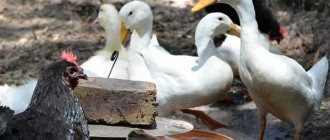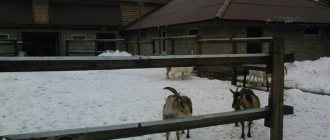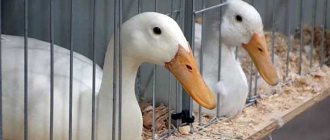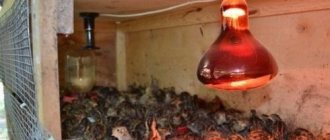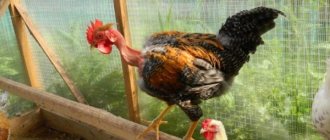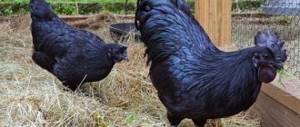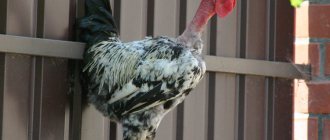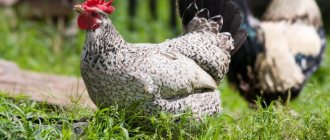Features of keeping guinea fowl with chickens
Guinea fowl is an amazing bird that can please not only with its high aesthetic qualities, but also with the excellent taste of meat and good egg production. However, many breeders do not risk breeding it, fearing that the bird needs special conditions, special maintenance and nutrition. In fact, this is far from reality: “royal” birds are unpretentious in care, have excellent immunity and good health, and can also exist in the same territory as traditional chickens.
Options for keeping guinea fowl: barn, cages, aviaries, free range
Basic conditions for keeping guinea fowl: a dry room, without drafts and good nutrition. The area is selected at the rate of 3-4 units per square meter. It is necessary to build perches at a height of 40 to 60 cm. For large flocks, long drinking bowls are prepared so that more birds can approach. If you plan to industrially breed guinea fowl as a business, it is preferable to buy automated equipment.
Guinea fowl like to bathe in a mixture of ash and sand, taken in equal quantities. This rids the bird of skin parasites. In separate containers you need to fill:
- chalk;
- shell;
- gravel.
These components strengthen the shell, large grains of sand in the stomach help the food grind better.
It is better to cover the floor with straw, shavings, and sphagnum peat. The dirty top layer is replaced once a month and a new one is added. More often you can add fresh bedding near the drinking bowls to avoid dampness. Keeping guinea fowl in winter does not require special conditions.
It is recommended to maintain a constant temperature in the room: 14-18 degrees. To do this, install a purchased or homemade stove for the poultry house. To eliminate problems with egg production, use lamps to increase the duration of daylight hours (at least 16 hours).
The guinea fowl is not aggressive, it is shy. It can be kept with any poultry. Keeping guinea fowl in cages makes care easier, but requires better and more balanced feeding. Greens and protein should be supplied daily.
Cover the open-air aviary with a net about 2 meters high. Since the bird can take off and fly about 10 m, it is better to trim the flight feathers on one wing by 5-6 cm. Proper breeding of broiler guinea fowl in a household farm provides for free range. It is necessary for rapid growth and weight gain, and makes it possible to save on feed.
Is it possible to keep guinea fowl and chickens together?
Since guinea fowl belong to the order Galliformes, they get along well in the same poultry house with chickens. Nevertheless, each of the birds has its own characteristics, which should be taken into account when cohabiting.
What is the advantage
According to many poultry farmers, keeping chickens and “royal birds” in the same room is quite simple and profitable.
Such cohabitation has a number of key advantages:
- Same diet. If chickens and guinea fowl are raised to produce good, high-quality meat, then they need an almost identical diet: grains, wet mash, vegetables, herbs, complexes of vitamins and minerals. The same menu will allow breeders not to spend a lot of time and effort on feeding the birds.
- Similar conditions of detention. The conditions for keeping birds are quite simple: they sit together on perches, use the same nests for hatching eggs, need cleanliness, comfortable indoor air temperature, and normal humidity. To raise them in a chicken coop, you should provide good lighting and heating, and keep the litter dry and clean.
- Hatching eggs is one of the main advantages of living together between “royal birds” and chickens. The fact is that the former do not have a well-developed maternal instinct, so farmers often place their eggs under a brood hen, which copes well with the responsibilities assigned to it.
- As for the relationship between bird species, in general they get along well with each other . Sometimes roosters can show aggression towards their “relatives” and enter into conflicts. To minimize this behavior, it is recommended to keep birds in the same house from childhood.
Flaws
Cohabitation of chickens and guinea fowls in the same territory also has its disadvantages.
- Freedom . As you know, the guinea fowl is a very freedom-loving bird; its comfortable development requires space and walking. Birds do not accept cramped conditions and cage housing and need a fairly large space, while chickens can live in cages or small closed poultry houses.
- Reproduction . The same applies to the process of reproduction. Chickens can perfectly live in a cramped house to raise young animals, while guinea fowls need an aviary or a walk.
- Possibility of mating . Roosters can cover not only female hens, but also guinea fowls, which will cause the appearance of hybrids - birds that look similar to the “royal individuals”, but with the plumage of a chicken.
Open aviary
An open enclosure is an area fenced with a net. The site may have bedding or a feedlot with green grass. Before building an outdoor enclosure, you need to choose the right location. It should not be close to the road or sources of drinking water. Aviaries for guinea fowl are often made near outbuildings. The wall of the barn will serve as one of the partitions of the pen. The size of the site depends on the number of individuals in the herd:
- To build an open enclosure you will need pipes for supports. They can be metal, polypropylene or wood. The diameter is chosen 50*50 mm;
- the fence is made of mesh. Use chain link or choose plastic material. The size of the mesh cell for the pen in which it is planned to keep chickens is 25 * 25 mm, for adults 25 * 50 mm or 50 * 50 mm. Galvanized mesh will last longer. Plastic material can be damaged by rodents that prey on birds;
- to install the gate you will need corners, hinges and a latch;
- To make markings, you need to prepare a tape measure, pegs, and twine;
- When building an enclosure, a drill is used to make holes for the posts, a hammer, wire cutters, a screwdriver, self-tapping screws, and nails.
It is necessary to carry out preparatory work. They involve performing certain actions:
- for 20 heads, an area of 7.5 * 3.5 m is fenced off. The area is cleared of debris and leveled;
- make markings. The corners are marked with pegs. A string is pulled between them;
- between the pegs, every 1.5 m, mark a place for installing supports. The mesh will be stretched over the supports;
- Using a drill, holes are made at the marking site. Depth 60 cm;
Outdoor aviary for guinea fowl
- the hole is filled with sand and gravel. This is a drainage pad. Its thickness is 10 cm;
- install the stand and fill it with concrete. Stand length 3 m;
- All supports are installed according to the markings. Check their verticality. Leave for 3 days until the cement hardens;
- a mesh is stretched between the posts. Choose rolled material to make it easier to work with;
- strengthen the mesh with self-tapping screws or wire. If you make hooks on the rack, then the mesh is placed on them. This way she holds on tighter;
- the top of the mesh should not be sharp. It is better to cover it with a wooden plank or metal corners;
- The corners are used to make a frame for the gate. They pull a chain-link onto it, install a latch;
- hinges for the gate are installed on one of the supports;
- install the door leaf, check its movement;
- The mesh is covered with earth from below or secured to a pre-installed harness;
- To prevent the birds from getting wet during rainfall, part of the area can be covered with a roof.
Guinea fowl fly high. If they are going to be kept in an open pen, the birds will need to have their wings trimmed. In order not to spoil their appearance, several large tail feathers are removed. Without them, the guinea fowl will not be able to fly. At the same time, the bird always walks with its wings tightly pressed to its body. The defect will not be noticeable.
If the enclosure is built on a feedlot, then there is no need to install additional feeders. Drinking bowls are needed, despite the fact that birds themselves obtain water from the succulent leaves of plants. Their first feeding occurs when dew falls on the leaves, which serves as a drink for guinea fowl.
More on the topic: Description of the Zagorsk white-breasted guinea fowl
Hybrid of guinea fowl and chicken
Often the cohabitation of guinea fowl and chickens leads to the appearance of hybrids. In this case, hybridization occurs as a result of the mating of a guinea fowl and a rooster, while backcrossing is practically reduced to zero.
Crossing chickens and guinea fowl makes it possible to obtain viable hybrids, but very few young animals are bred. Such specimens resemble guinea fowl in appearance; they lack a crest and earrings on the head, and the body is quite massive and large, with chicken-like plumage. The hybrid bird does not have gonads, and even after autopsy it is almost impossible to determine the sex. But these birds have good health, good immunity and excellent resistance to various ailments.
Video: hybrid of guinea fowl and chicken
Features of keeping guinea fowl with chickens
Author: Chicken Ryaba
/ 06 Oct 2021 at 16:23
Good afternoon, experienced and novice poultry farmers! Today we will talk about the advantages, disadvantages and practical aspects of an interesting trend in private poultry farming. This is the joint keeping of chickens and guinea fowls or a bird symbiosis of different-sized land birds.
When raising purely egg-laying hens, you cannot get meat with good organoleptic qualities, but if you add guinea fowl to the laying hens...
A common misconception is that guinea fowl are very demanding in terms of housing and feeding conditions. Unfortunately, because of this misconception, many people refuse to take care of this bird.
In fact, guinea fowl have an excellent immune system, convert feed into products well, and get along with chickens, their closest relatives. The two bird species represent one order.
Features of the royal bird breed
The royal bird is a truly unique and exotic species. Its appearance is filled with a wide variety of colors. Externally, it is a kind of mixture of turkey and chicken. Most people really don’t even know what such a bird looks like, let alone its conditions of detention and characteristics. Such a bird has an oval and elongated body, a short neck, a small and light head, on which there are specific growths, this makes them look like turkeys. The royal bird is the only bird species that can withstand temperatures of -55 degrees. It is absolutely unpretentious in keeping and feeding, it is bred in any climatic conditions, in addition, the royal bird is very productive. Adult females weigh two kilograms, and males reach three kilograms. Egg production is average; during the year, one female can lay 120 eggs. This breed is considered one of the hardiest birds; guinea fowl have very strong immunity and are not susceptible to many diseases that often affect chickens and quails.
In fact, keeping this breed at home is very simple. Such a bird will not be a problem for chickens or quails. They are very friendly, with an easy-going character and do not conquer their territory. Owners of vegetable gardens should not worry about their harvest; guinea fowl are very well-mannered and noble, they will not peck berries and swarm in the beds, unlike chickens.
There is one peculiarity in breeding. It is so inherent in nature that this species of bird mates only in the wild. Therefore, it is necessary to organize long walks in the fresh air. If the bird is always kept in cages, then reproduction will be in question. For one male, six females are enough. The process of incubating eggs is the same as for chickens or quails. Females are only productive for two years.
Keeping chickens and guinea fowl together
- Identity of diets when raising chickens and guinea fowl for meat production. Meat poultry is fed grain, wet mash, vegetables, grass, and vitamin and mineral supplements. The same food preferences of birds reduce time and financial costs.
- There is no need for different types of nests, bedding, or very different microclimate parameters.
- Guinea fowls do not have excellent maternal qualities; they often refuse to incubate eggs, which brood hens readily accept.
- Character compatibility. In order to prevent fights between adults, it is advisable to keep chicks of different species together.
- Firstly, guinea fowl need space. In cramped conditions, this bird is unable to show high productivity. Therefore, a spacious poultry house and a large paddock are required.
- Secondly, roosters are capable of trampling guinea fowl. Therefore, there is a high probability of obtaining a hybrid bird that is externally similar to the maternal form. The offspring receive plumage from roosters.
Description of the bird
The general features of guinea fowl are similar to the appearance of large breed chickens. The bird has a massive oval physique. There is a peculiar bulge on the back that resembles a hump. The head is disproportionately small to the large body. The crown is covered with a horn-like growth. The beak is shaped like a hook, and a fleshy red beard grows under it.
The body is covered with thick plumage. The color depends on the type of breed. There are gray, white, speckled, blue and other birds.
Important! Guinea fowl are capable of shedding feathers from their tail in order to save themselves.
The bird is distinguished by strong, hardy legs. They resemble broiler feet in thickness and shape. Guinea fowl were domesticated recently, which is explained by the predominance of semi-wild habits. If chickens, ducks or geese lay eggs in equipped nests and are not afraid of humans, then the activity of a strange bird is different. Guinea fowl lay eggs in secluded places that the owner will have to work hard to find. Birds lead a flocking lifestyle. Fearfulness is considered a natural instinct of self-preservation. If strangers, pets or other dangerous objects appear, the flock is able to fly away.
Important! Domestic breeders have currently developed 4 breeds of guinea fowl.
Content Features
The advantage of keeping guinea fowl is its simplicity, which allows beginners to do it. There is no need to purchase complex equipment, build a special poultry house, or purchase expensive feed. In summer, the bird obtains most of its food on pasture itself. Guinea fowl eat grass seeds, catch insects, worms, and larvae. In the warm season, the bird constantly walks outside and wanders around the yard.
When the birds are fed for meat, the flock is placed in an aviary. Limiting activity affects a decrease in egg production. However, individuals quickly gain weight. It is true that feed consumption is increasing.
Despite their shyness, guinea fowl get along well with poultry. At the sight of danger, the flock raises a loud cry. Because of this feature, guinea fowl are often called yard guards. To make the bird less afraid, keep it in a quiet place. It is better to care for 1 or 2 people, to whom the flock gets used to. Strangers are considered an object of danger.
Wild guinea fowl in Africa begin to lay eggs when the rainy season ends. In domesticated representatives, egg laying also occurs during the warm period of the year. Hatched chicks do not survive well in damp conditions and limited light. However, young animals 2-3 months old are able to adapt to poor conditions and cold climate.
Productivity
Guinea fowl lay elongated, pear-shaped eggs. The shell is highly durable. The shell prevents the penetration of pathogenic microorganisms. Due to reliable protection, the product is stored at temperatures from +2 to +5°C for 4 months.
See also: Description of broiler guinea fowl: features of appearance and maintenance rules
The net yield of meat from the carcass reaches 68%. Breast is considered a delicacy. It makes up 1/5 of live weight, and 40% of muscle mass. The meat tastes like game without a specific smell or taste. The product contains 23% protein and 5% fat.
The weight and egg production of a bird depends on the breed. The average weight of an adult is 1.5-2 kg. The number of eggs is from 80 to 120 pieces per year. The average weight of each specimen is 45-47 g.
Keeping chickens and guinea fowls together at home
Features of the “dormitory” equipment.
The tips below will help you set up your poultry house:
- After putting the poultry house into operation, observe the birds for several days, make sure that the birds in your care have enough perches. If there is a shortage of the latter, conflicts arise, which does not fit in with high productivity.
- When building a dormitory, adhere to the recommended density of guinea fowl per square area - two to three adults.
- Fence the walk with at least a 2-meter mesh. With a lower fence, you will encounter unauthorized flights of guinea fowl.
- Provide the birds with sand or ash baths installed on the walking area. With their help, both birds get rid of parasites.
From the section “Did you know?” Guinea fowl eggs do not provoke an allergic response and are safe from salmonella infection.
What are the features of keeping broilers?
Caring for broiler guinea fowl is the same as caring for other types of poultry. But feeding is another matter. Broiler guinea fowl needs high-quality nutrition, especially if bred for meat.
Broiler breeds need to be fed frequently to help them gain muscle mass quickly. But if breeders need meat and not fat, then the diet must be strictly regulated.
Birds' first meal is early in the morning when they wake up. Moreover, if the breeder did not have time to pour out the food, they eat what is left after dinner. Then they are fed at 7-8 o'clock in the morning - breakfast. From 12 to 14 o'clock they need to pour food again, this is a kind of lunch, but they get dinner from 6 to 7 o'clock in the evening.
Feeding and maintenance of broiler guinea fowl
The most important rule is that the food is made wet! Their diet is not complicated: grains, root vegetables, herbs, bone meal, vitamins, minerals. Porridges are usually prepared with broth, whey, milk, yeast solution or something like that
It is better to give mash fresh, rather than prepared a week in advance. As for greens, broiler guinea fowl eat a variety of grasses, so it is worth planting a few simple, fast-growing plants in the run pen.
Young broiler guinea fowl have a specific diet.
- In the first 2 days they are fed a boiled egg and dry (squeezed) cottage cheese.
- On day 3, you can give porridge made from corn, barley, oatmeal and wheat with dry milk.
- From day 5, chalk, gravel, and shells must be introduced into the diet to normalize digestion.
- On day 7, you can give mash with chopped herbs and yogurt. The greens should be soft, like clover or nettles.
In the first days of life, chickens are fed 5 times a day. And only from 2 months they are transferred to 4 meals a day.
Feeding chickens and guinea fowl
A 3-fold feeding regimen is recommended. Although, when keeping the bird for walking, it is enough to feed the bird twice a day. By the way, overfeeding in egg poultry farming is unacceptable, as it leads to obesity of the bird and, accordingly, to a deterioration in reproductive ability.
Morning food - wet mash. They give it at noon, and grain in the evening. The grain part of the diet is represented by corn, oats, millet, barley, wheat, the vegetable part is boiled potatoes, carrots, beets and pumpkin.
In winter, greens are replaced with hay and pine needles. Regardless of the season of the year, the diet is supplemented with shells, chalk, fish oil, meat waste, bone meal, salt, fish oil, and yeast.
Young animals aged 10-20 days are fed:
- Crushed grain – 10 g;
- wheat bran – 1 g;
- cottage cheese, skim milk (can be replaced with sour milk) and herbs - 5 g each;
- yeast – 0.2 g;
- chalk and shell – 0.3 g.
This is one of the simplest diet options.
The feed mixture for adult birds consists of wheat, corn, barley and oatmeal - 33, 5, 15 and 16 g, crushed peas - 6 g, grass meal - 10 g, fish meal - 2 g, soybean meal - 4 g, yeast – 2 g, fat – 2 g, mineral supplement and premix – 1 g each.
How to care
Most experienced breeders purchase small chicks for the purpose of subsequent breeding. When choosing this method, you should prepare a diet for the poultry in advance and prepare the house. The walls of the room where the chicks will live should be covered with material in order to eliminate drafts. Chicks require compliance with a certain temperature regime. In the first few days after the birth of individuals, the temperature in the house should not be lower than thirty-five degrees Celsius. Once the birds reach ten days of age, you can begin to gradually lower the temperature.
Chicks and young animals
Many beginners often ask the question of what to feed young animals. For individuals that have just hatched from eggs, a mixture is made based on steamed millet and egg yolk. After a week, you can start adding bran and a small amount of finely chopped greens to this mixture. When the chicks reach three weeks of age, barley, oats and other cereals should be introduced into their diet.
Chicks that have reached the age of one month can switch to adult food. To ensure that young animals do not lag behind in development, various fortified supplements, a mixture of bone meal and fish oil, as well as yeast should be used. Having reached three months of age, the chicks begin to quickly gain weight. The average weight of a three-month-old individual is about two kilograms.
Adult bird
The diet of an adult bird depends on the goals pursued by the entrepreneur: rearing for the purpose of breeding or selling meat products . In the summer season, birds can obtain the bulk of their food on their own. They eat not only grass and insects, but also small rodents. During the winter months, a mixture of greens and grains is used for feeding. The bird's daily diet should contain bran, corn, oats, grated carrots, feed yeast, pine needles, clover hay and fish oil.
Needles are an essential part of the feed mixture used during the winter months. Coniferous needles contain a large amount of various vitamins that contribute to the normal development of guinea fowl. The amount of feed in the summer months should be significantly lower than in other periods. Otherwise, the risk of bird obesity increases, which will leave a negative imprint on the quality of egg production.
Breeding and keeping guinea fowl at home is profitable
Is it possible to keep them together?
Keeping these birds together is quite possible. The nature of the birds is somewhat different, but they can get along with each other. To achieve this, the easiest way is to raise chicks together. Adults are removed gradually, starting with the placement of several guinea fowl in the chicken coop. In case of aggression on the part of any chicken or rooster, the instigator is removed.
Conditions for breeding guinea fowl
Poultry room
Any room is suitable for raising and breeding guinea fowl. In the summer, it may well be just a shed made of boards; for year-round winter maintenance, a warm, thick-walled barn is needed.
For successful wintering, deep litter is placed on the floor of the poultry house. To do this, sawdust, peat, shavings or hay are placed on the floor.
Perches in the poultry house are arranged at a height of 50-70 centimeters from the floor. Each bird needs 25-30 centimeters of perch length.
It is useless to place nests for guinea fowl in a poultry house - in order to lay eggs, birds usually choose the darkest and most secluded corner.
Guinea fowl's favorite pastime is swimming in ash. To do this, install a bath in the poultry house and regularly fill it with fine sand or wood ash.
An aviary must be built next to the poultry house, since in the absence of walks, guinea fowls reduce egg production. Guinea fowl fly very well, so the height of the net is made at least 2 meters. The area of the aviary depends on the purpose of keeping the bird. To obtain a high-quality fertilized egg, each bird must have at least 15 square meters of paddock space.
Important: Birds often get frostbitten feet when walking in the snow. To prevent this from happening in winter, straw or hay is spread on the walking yard.
Hatching of young guinea fowl
Female guinea fowl do not like to incubate eggs, so guinea fowl chicks are hatched either under a hen or in an incubator. Eggs stored for no more than eight days at a temperature of 10-12 degrees Celsius are selected for placement in the incubator.
Note: To obtain a fertilized egg, guinea fowl are seated in groups in which there are no more than four hens per cockerel.
Requirements for hatching eggs:
- egg weight must be more than 40 grams;
- the egg should be the correct pear shape;
- There should be no cracks, protrusions or deformations on the shell.
To destroy pathogenic microflora, before placing the egg in the incubator, the egg is irradiated for 5 minutes with a quartz lamp. If a lamp is not available, the egg can be dipped in a weak solution of iodine or potassium permanganate. After processing, the eggs are checked using an ovoscope.
Guinea fowl hatch from eggs in 28 days. After complete drying, they are placed in the room where they will grow. In the first week, 25 guinea fowl are planted per 1 square meter of area; as they grow older, they are given a more spacious room or some of the chickens are removed.
Raising young guinea fowl
During the first few days, the chicks mainly lie under the heater lamp, then they behave more animatedly, begin to eat well and run around a lot. At one day of age, it is recommended to place the chicks under a quartz lamp for 1-2 minutes - this way they will become stronger and begin to develop faster.
Note: To prevent adult guinea fowl from flying, the brush on one wing of day-old chicks is removed with scissors. After the operation, the wound is treated with iodine to prevent contamination.
To raise young animals, prepare a closed room, protected from predators, rain, wind and drafts. A prerequisite for a poultry house is the presence of a controlled heat source. The easiest way to use such a source is to use a red infrared lamp mounted on a special bracket.
The light bulb is installed in a corner at such a height that the temperature on the floor under it is 30-35 degrees Celsius. In the rest of the room, the temperature is maintained in the range of 20-25 degrees. Being in a room with a heater bulb, the guinea fowl have the opportunity to bask under the “Sun” of the IR bulb and walk around the rest of the room at room temperature. The light bulb is not turned off during the first month, then the temperature is gradually reduced to room temperature.
A bedding consisting of dry sawdust or clean river sand is sprinkled on the floor of the room for raising young animals, and a feeder and drinking bowl are installed.
During cultivation, two feeders are used. One for dry grain, the second for wet mash. For dry grain, a hopper-type feeder is used; for wet mash, a feeder made from a horizontally installed sewer pipe with slots in the upper part is a good choice.
Important: Feeders must be arranged in such a way that the chicks cannot climb into them with their paws.
Feeding young guinea fowl
Newly hatched guinea fowl use the internal reserves of the body for nutrition, so they eat very little. For the first few days, ground corn grits, finely chopped boiled eggs, and millet are placed in the feeder. By the end of the first week, cottage cheese, yogurt, and finely chopped greens begin to be introduced into the diet of guinea fowl. The leaves of clover, dandelion, lettuce, cabbage, and wheatgrass are chopped into greens. To ensure that the food does not linger in the feeder, it is given in small portions.
Important: To prevent gastric upsets, feeders are washed to remove any leftover food before each feeding.
At the age of 14 days, the main diet of guinea fowl is a mixture of corn, wheat, oat and barley flour; chopped greens should always be in the feeder. In addition to food, coarse sand, small pebbles, and chalk are poured into a separate feeder.
At the age of 30 days, guinea fowl are transferred to a diet of crushed grain, chopped grass, and grated raw vegetables.
From the age of one month, guinea fowl are allowed to go for walks in the open air. It is better to do this in a grassy area so that the chicks can independently peck the grass they like.
With quality feeding, by the age of three months, guinea fowl reach a weight of 1.3 kilograms. At the same time, approximately 4–4.5 kilograms of grain feed are spent on raising each guinea fowl.
Feeding an adult bird
An adult bird is quite unpretentious in food. A guinea fowl should be given 100-150 grams of crushed grain or feed and the same amount of succulent feed or greens per day. Part of the feed can be replaced with kitchen waste, boiled vegetables, and cereals. Cabbage, finely chopped grass, grated carrots, rutabaga, and pumpkin are used as succulent feed. In winter, hay dust and spruce needles are added to the mash.
Note: It is better to make feed mash with milk, skim milk or curdled milk. If you use an aqueous solution of baker's yeast for mash, the bird's egg production will increase.
A very important component of the guinea fowl diet is animal feed. When kept for walking, the need for them is satisfied by worms, frogs, insects and snails. In winter, to satisfy the poultry's need for animal protein, finely chopped river and sea fish or cottage cheese are introduced into the diet.
A mandatory condition for keeping birds is the constant presence in the house of a feeder with river sand, small pebbles, chalk, crushed shells and shells. In the absence of mineral supplements in food, the bird’s egg production sharply decreases, and the egg shells become thin. If there is no supply of calcium for a long time to form the shell, it begins to be washed out of the bones of the bird, guinea fowl begin to limp, and fractures of the bones of the wings and legs are possible.
Guinea fowl are fed two to three times a day. Food must be displayed in the poultry house - this is how the birds are taught to regularly return home from walking. At the same time as feeding, the water in the drinking bowls is replaced.
Pros and cons of this approach
- The main advantages of cohabitation include the following factors:
- identical feeding, which saves the breeder time and effort;
- similar requirements for the premises make it possible to avoid the construction of additional space;
- Since the maternal instinct of guinea fowl is reduced, hens are excellent for incubating their eggs.
- Certain disadvantages of shared content also exist:
- guinea fowl require more free space than chickens;
- a larger enclosure is also necessary for breeding;
- in case of conflicts, the egg production of chickens decreases;
- the possibility of crossing and the appearance of sterile hybrids.
It would be most optimal to keep them together with meat breeds of chickens, since the egg production periods of these species do not coincide.
Features of Shared Content
The basic conditions for keeping and caring for these birds are identical. Co-location allows you not to think about demarcating the premises and creating separate paddocks.
Organization of the premises
For general living, birds need a spacious room.
The requirements for floor materials, bedding and perches are the same as for a conventional chicken coop. The main task is to provide protection from rodents and avoid dampness. Both types of birds sit on perches, so their number should be sufficient for the entire flock. On average, 6 birds can settle on 1 meter of perch.
Nutrition rules
The birds' diet consists of the same grain mixtures, as well as herbs, vegetables and various additives. Both species of birds eat 2-3 times a day; if they are free-ranging, you can feed them only in the evening. Guinea fowl chicks eat the same things as chickens, but have a much larger appetite. It is necessary to ensure that they do not completely eat the chicken feed.
Walking together
The pen for joint walking should be fenced higher than usual, at least 2 meters, to prevent guinea fowl from flying. Both birds love “baths,” so it’s worth providing them with places with ash and sand. Guinea fowls go out for walks even in severe frosts.
Keeping two species of birds together is an issue that each breeder decides independently, based on the importance of the possible benefits for a particular farm.
Sources:
https://agronomu.com/bok/7435-osobennosti-soderzhaniya-cesarok-s-kurami.html https://pro-kur.ru/sovmestnoe-soderzhanie-kur-i-czesarok/ https://fermer.blog /bok/pticevodstvo/kury/soderzhanie-kur/731-mozhno-li-kur-derzhat-s-cesarkami.html
Walking guinea fowl in the country
With the onset of warm weather, guinea fowl can be transferred to paddocks (at the rate of 30 m2 per head). Walking areas should be fenced with wire mesh 2 meters high so that guinea fowl cannot fly over it. The walking area is selected with natural bushes to create the proper conditions for this type of bird.
A standard mobile house is placed in the middle of the paddock. With the onset of darkness, guinea fowls enter (or are driven) into the house and sit on perches, and at 6 o’clock in the morning, before morning feeding, they are released to walk for the whole day.
Massive cases of guinea fowl flying over the fence and going into the forest have not been observed. Sometimes one or two guinea fowl can fly over the fence, but they do not go further than 5-10 m and strive to get back into the fenced paddock.
Guinea fowl that have overwintered in the same room get used to each other and stick to one group when walking. They quickly get used to the service personnel and willingly listen to them. However, as soon as a stranger appears on the farm, the guinea fowl immediately raise a cry and calm down only when he leaves.
Sawdust serves as bedding for guinea fowl during the winter period. In the summer, for the convenience of cleaning up litter, you can also sprinkle sawdust on the floor of the house. All necessary equipment - feeders, drinkers, buckets, etc. are used the same as for chickens.
Guinea fowl, like chickens, love to rummage (bathe) in the ground, for which purpose it is necessary to have sand or install ash baths on the paddocks. I advise placing ash baths in the poultry house, since guinea fowls readily use them.
